50 of the World's Best Biomimicry Examples (so far)

Hi Biomimics
Below is a list of our top 50 innovations inspired by nature. Each nature-based solution has been implemented as a business or a biomimicry invention / is a biomimetics example.
The criteria involved an extensive mapping of each biomimicry example, how it meets the Biomimicry Life's Principles if it can be widely applicable, how easily can it be applied and distributed globally and lastly, the benefit to humanity. This is a great resource if you're looking for biomimicry project ideas too.
Are you ready to learn biomimicry? Get 40% off our Short Course set! Explore the foundational principles, design approaches and more real world examples of biomimicry through in-depth videos and textbooks. Valid until 9 May 2025.
Without further ado, let's see who's in the best biomimicry examples of all time!
How Birds Inspired Flight


Leonardo da Vinci applied biomimicry to the study of birds in the hope of enabling human flight. He very closely observed the anatomy and flight of birds and made numerous notes and sketches of his observations and countless sketches of proposed "flying machines"... known today as an aeroplane. His research later inspired the Wright brothers. These two American aviation pioneers invented, built, and flew the world's first successful motor-operated aeroplane. A simple but profound example of biomimicry in action!
🦅 Inspired by: Birds
📍 Where: Italy & America
🎯 Innovation / Function: Human flight
✏️ Who: Leonardo da Vinci & the Wright Brothers (shared credit)
How Prairie Ecosystems Inspired Sustainable And More Efficient Agriculture

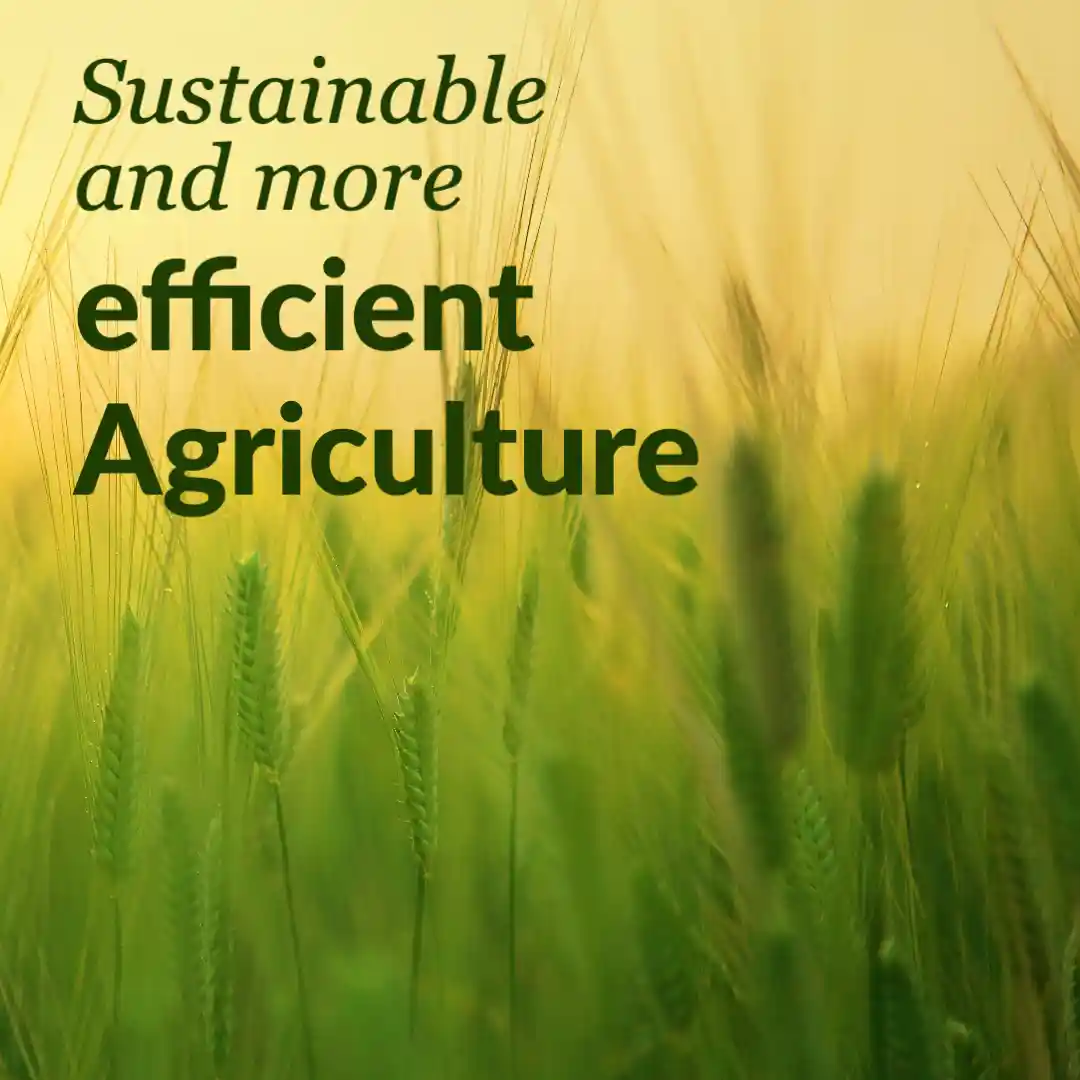
We can learn a lot from the diverse and resilient ecosystems of the prairies. Although they seem to be in constant equilibrium, nature always exists in a continuous state of disturbance and fluctuation. Our current industrial agricultural practices are abusing resources and using toxic chemicals on huge scales. The Land Institute has developed a method called Perennial grain cropping, or permaculture. They utilise polyculture and cooperative crops. Such systems mimicking nature require substantially less irrigated water, prevent soil erosion, have inbuilt pest resistance and increase the health of the plants.
🪲 Inspired by: Prairie ecosystems
📍 Where: Kansas, USA
🎯 Innovation / Function: Sustainable agriculture at scale
✏️ Who: The Land Institute
Are you ready to take the next step in your biomimicry journey? The Biomimicry Practitioner Programme is a mentored course that enables your to do a biomimicry project of your choice, guided by experts. The next cohort kicks off on 10 June 2025 and applications are open.
How the Spiral Flow Inspired an Efficient Water Mixing System
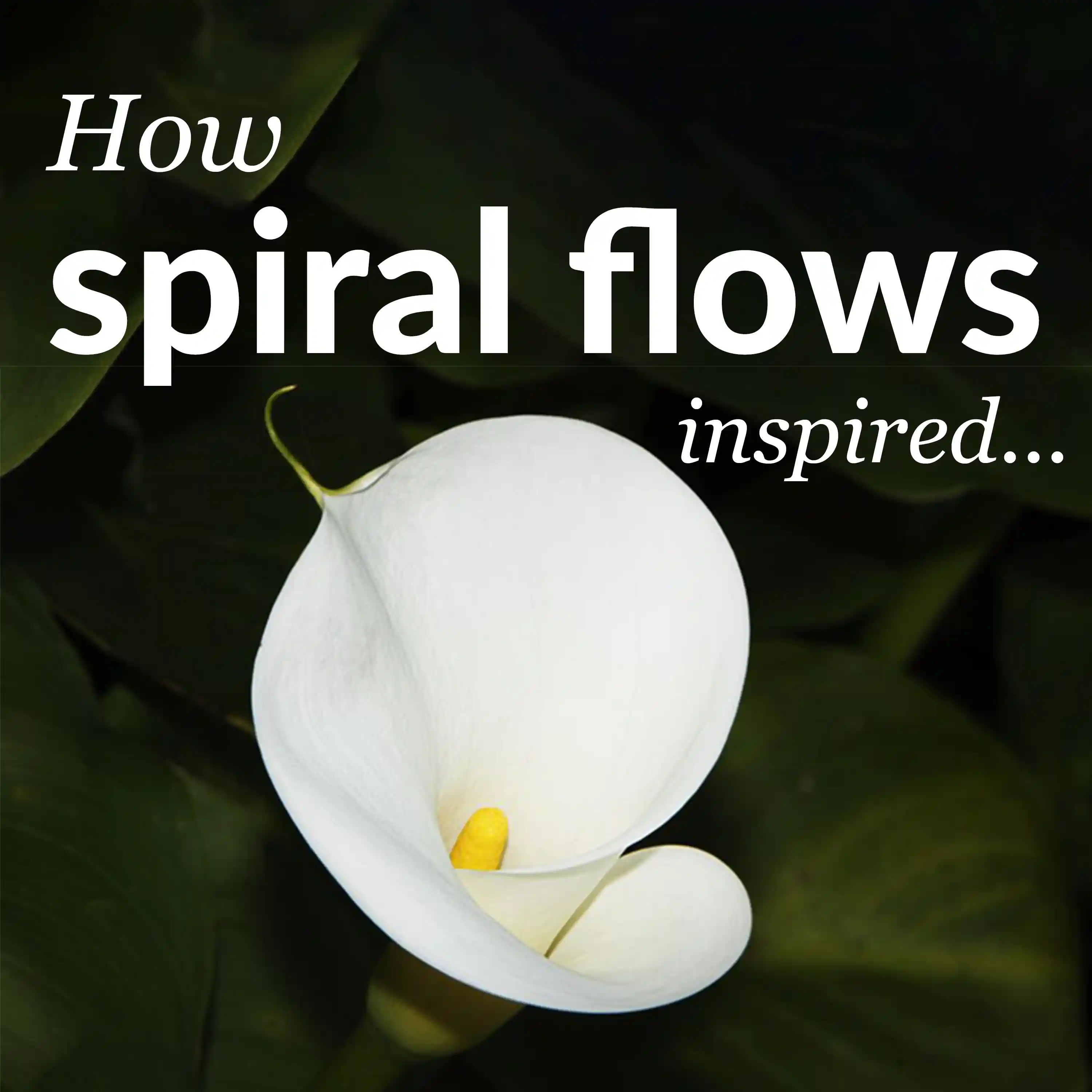

If we look at patterns in nature long enough, we will see that nature is very much in deep love with spirals. How can you not be? These fractal patterns are found in whirlpools, tornados, certain sea shells and even plants like pax lilies. The structure seems intrinsic to nature as it helps to move material efficiently and without drag. It is also fractal in nature and can be scaled up and down based on requirements. The scientists at Pax Water have developed active tank mixing technology and other applications like fans which have reduced the energy required for similar outputs by about 30%.
💦 Inspired by: Pax Lily and spiral flows
📍 Where: California, USA
🎯 Innovation / Function: Efficient water and material mixing systems
✏️ Who: Jay Harman, PAX Water Technologies
How Slime Mold Inspired City Planning


“Myxomycete” also commonly known as the slime mould is a unicellular organism that is capable of mapping very complex routes and communicating information for finding its food all without a brain, a nervous system or any of the organs we imagine when we think of these complex tasks. Slime moulds have existed for about a billion years and have evolved over that time to be really efficient and adaptive towards their one singular goal of feeding and surviving. So when a group of scientists in Japan placed its favourite food, oat flakes, at various locations corresponding to the major cities in Japan, this creature was able to, within a matter of 5-6 days, map out the complex rail network which took Japanese engineers years to plan and map. This technology, perfected in nature, can really help in traffic mapping in new emerging countries in Africa and Asia and city and housing development planning.
🦠 Inspired by: The Slime Mold
📍 Where: Tokyo, Japan
🎯 Innovation/function: Efficient, quick and adaptive city, road, rail mapping
✏️ Who: Atsushi Tero from Hokkaido University in Japan
How Bur Seeds Inspired Velcro


Oh, Velcro! What would we do without you? Did you know that this easy-to-plug and remove clamping mechanism is actually derived from nature? In 1941, a Swiss engineer named George de Mestral was out hunting with his dog when he realized small burrs from the burdock plant were stuck to his dog’s hair. On closer inspection, he realized that these tiny hooks and loops can be made into clothing or garment fasteners which led to the discovery of velcro and our society has hence been using them in every practical application possible.
🌱 Inspired by: Bur seeds of the burdock plant
📍Where: Switzerland
🎯 Innovation/function: Non-adhesive, easy to fix and remove clamping mechanism
✏️ Who: George de Mestral
How The Fungi Inspired Local Land Restoration And Toxic Waste Cleaning


“That toxic waste looks mighty delicious” - A fungus maybe. We, humans, have created more harmful waste than we are ready to admit and a lot of it is sinking into our land, destroying the soil quality and toxifying the land. Researchers at “Novobiom” have turned the field of bioremediation on its head by locating fungi already in stages of reducing synthetic materials into harmless substituents and selectively breeding them to treat heavily polluted waste. All this can be done locally without hauling the soil to any other location for treatment. If we train fungi to treat the waste that we have already created, it can go a long way to converting our planet to its pre-industrial and agricultural glory.
🍄 Inspired by: Fungi
📍 Where: Ottignies-Louvain-la-Neuve, Belgium
🎯 Innovation / Function: Bioremediation of concentrated toxic waste (mycoremediation)
✏️ Who: Novobiom
Are you a biologist, who wants to learn more about biomimicry and how the two worlds intertwine?
Download this free eBook: A Biologist's Guide to Biomimicry
How Evapotranspiration in Plants Inspired Safe, Water Less And Portable Toilets


The lack of sanitation infrastructure in the world is concerning. It has wide-ranging effects on the health, safety and social well-being of society. This affects poorer sections of society and especially women and girls the most. change:WATER Labs has created iThrone, which uses evaporation to dispose of human waste without using energy or plumbing. These low-cost, portable toilets rapidly evaporate 95% of the sewage mimicking the evapotranspiration process in trees and leaves. The system works as such: the membrane bag is non-porous and only allows water to escape as gas without needing any plumbing or additional water. This technology can prove vital in refugee camps and resource-starved regions.
🌳 Inspired by: Evapotranspiration in trees
📍 Where: Massachusetts, USA
🎯 Innovation / Function: Waterless, low-cost, portable toilet
✏️ Who: change:WATER Labs
How Anhydrobiotic Organisms Inspired Long-Term Vaccine Storage


As we learnt during the COVID-19 pandemic, quick, effective and wasteless delivery of vaccines is extremely crucial for saving millions of lives worldwide. As it turned out though, we were completely unprepared for the pandemic and vaccine delivery was especially poor in the developing world. The big reason being that vaccines need to be transported in frozen conditions which are not always met. Nova Labs has patented a method where the vaccines are first dehydrated using sugar syrup which prevents bacteria from incubating and growing in the vials. Once injected, the body fluids reactivate the vaccine and it can start its normal delivery process within the body. A technology like this has the potential to avoid the next public health disaster and allows us a chance to learn from our experiences the previous ones.
🪲 Inspired by: Resilient anhydrous organisms
📍 Where: Leicestershire, UK
🎯 Innovation / Function: Long term vaccine storage
✏️ Who: Nova Laboratories
How Mosquito Proboscis Inspired A Less Painful Needle


We humans disagree on almost everything but I think we can all agree on how annoying and pesky the mosquitos can be. They have evolved with us to be extremely efficient and sneaky about sucking our blood and have adopted a variety of tools, both physical and chemical, used to dull our ever-powerful senses. The mosquito's proboscis is made of multiple different needles each with its varied use so that the piercing is not noticeable at all. Researchers in 2008, mimicking the mosquito, developed a 3 prong needle that significantly reduced the pain caused by needle insertion. The methodology is improving and science is getting ever closer to mimicking those pesky bugs in a good way.
🦟 Inspired by: Mosquito proboscis
📍 Where: India & Japan
🎯 Innovation/function: Less painful needle
✏️ Who: M K Ramasubramanian, O M Barham and V Swaminathan
How the Humpback Fins Inspired more Efficient Wind Turbines


When we think of reducing drag or increasing lift, we mostly picture the smooth surface of an aeroplane, but when researchers inspected the bumps on the humpback whale fins, they discovered something rather counterintuitive. The biomimetic model flippers reduced drag by 33% and increased lift by 8%. Whale Power, Canada, has already implemented them on their wind turbines and this has increased the efficiency by over 40% over the traditional wind turbine in some cases. Similar designs can also be mimicked in other aerodynamic applications such as fan and propeller blades, aeroplanes and surfboards.
🐋 Inspired by: Humpback whale fin
📍 Where: Tests by US Naval academy
🎯 Innovation/function: Decrease drag and increase lift of blades
✏️ Who: Whale Power, Canada
How Diatoms And Aquaporins Inspired Water Desalination And Filtration
Clean water scarcity is already proving to be a major hurdle for humanity as many major cities around the world are fast approaching day zero. The high energy-intensive process of reverse osmosis is also showing its age and pumping huge amounts of CO2 in the air. But nature has a very effective and efficient way of filtration and each of our tiny cells already comes with this feature preloaded. It’s called the aquaporin membrane and it allows water molecules to pass through while keeping out the other particles. These aquaporins are very unstable outside the cell structure, but researchers at Aquammodate have gone a step further by mimicking the silica around a microalga called diatoms which protects the delicate aquaporins from disintegrating. These combined discoveries have the potential to save the world and avert an impending disaster fueled by water scarcity.
💦 Inspired by: Diatoms and aquaporins
📍 Where: Sweden
🎯 Innovation/function: Energy efficient, non-toxic water filtration
✏️ Who: Aqammodate
PS - Looking to learn biomimicry? You can download our free Biomimicry Field Guide ebook here - it's an overview of the essential biomimicry principles and how to practice biomimicry.
How Nature Inspired Circular Economy


One of the major problems we face on our planet is the waste that is produced from our consumer lifestyle that is just ending up in landfills and in our oceans as micro plastics. Nature though, in its design, has evolved methods and lifeforms so that every microscopic bit of bio material is not considered a waste and it’s a part of the ever operational biological cycle of nutrients. Turning bike tires into bags, sugar cane waste into to-go boxes, and reclaimed wood to new flooring is what the circular economy looks like for us. Also major culprits like fast fashion have taken up the task to design new clothes from clothing waste. The future is to design industrial complexes with all industries in effect producing zero waste as byproducts of one industry are fed as raw materials for another. A true ecosystem mimicry.
🪲 Inspired by: The ecosystem
🎯 Innovation/function: Circular economy products. Products out of waste
✏️ Who: Green Guru, TerraCycle, Greenline Paper
How Stenocara Beetles Inspired Water Harvesting from Air
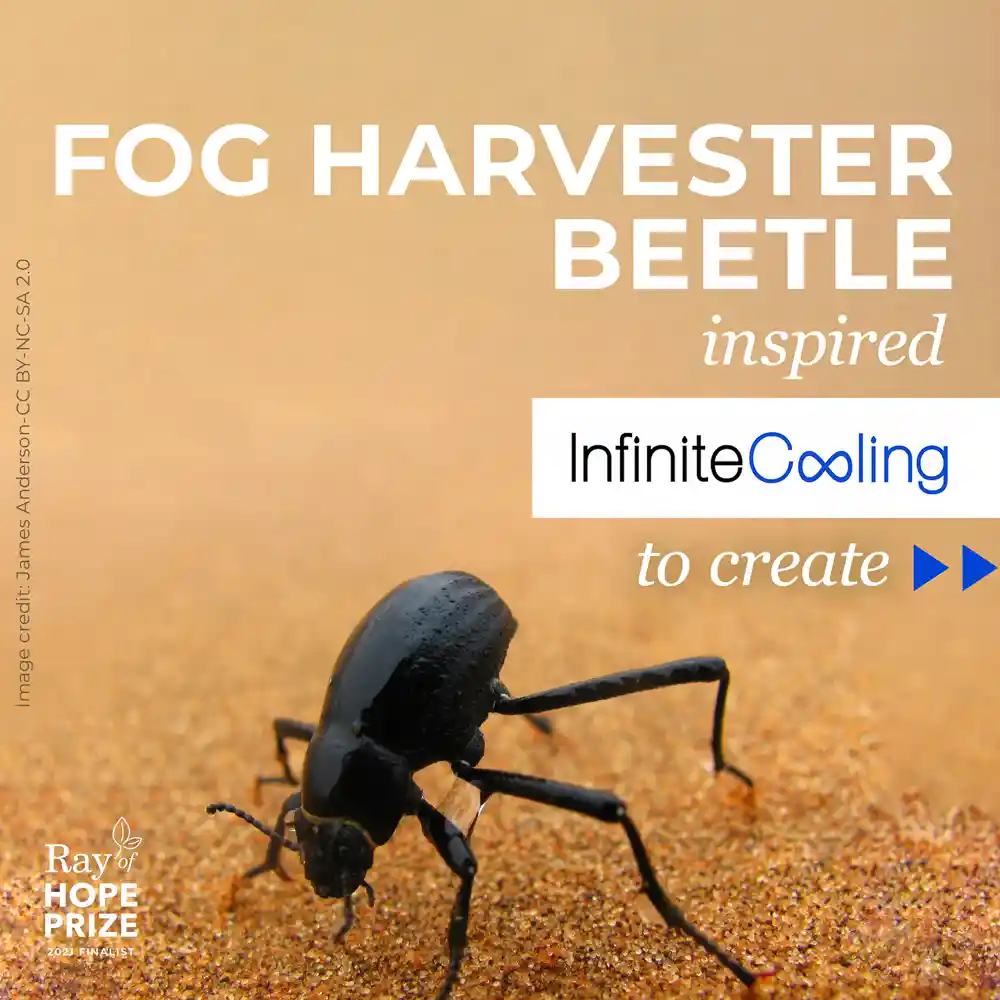

They say nothing comes out of thin air. Well, no one told that to this little survivor specialist found in the harsh climate of the Namibian desert. To survive this hellish waterless biome, evolution has provided the Namib beetle with an interesting way of collecting water from the thin air using the various bumps and ridges found on the body to collect and condense water vapours and channel the collected water to its mouth. Infinite Cooling, USA, has developed a fog-catching system by capturing evaporating water from cooling tower plumes. This is vital for the industrial sector, which is one of the highest consumers of commercial water. A big step toward fighting the climate crisis was learnt from this tiny beetle in the middle of the desert.
🪲 Inspired by: Stenocara beetle
📍 Where: United States
🎯 Innovation/function: Water harvesting from fog and air
✏️ Who: Infinite Cooling
How The Pitcher Plant Inspired A Substance-Repellant Container Coating


Don’t you hate it when a fourth of your favourite peanut butter is stuck on the inside of your container and annoyingly out of reach? This problem is compounded by many folds on an industrial scale when paint and other viscous liquids leave a huge residue on the container. This leads to material loss, wastage and downtime. Researchers at Adaptive Surface Technologies have created a surface coating that solves this exact same problem and they have nature’s pitcher plant to thank for it. Studying this carnivorous plant and its unique technique to catch insects in its pouch, they have discovered a way to put a liquid barrier between the substance and the container which makes the substance fall right off without leaving any residue behind.
🪴 Inspired by: Pitcher plant
📍 Where: Massachusetts, USA
🪣 Innovation / Function: Repellent liquid coating for containers (paint cans, ship hulls, etc)
✏️ Who: Adaptive Surface Technologies
How Sharkskin Inspired a High-Tech Swim Fabric


A shark, although championed for its teeth and immense bite force, might have another evolutionary ace up its sleeve. Shark skin is covered with types of scales called dermal denticles. These denticles disrupt eddie formation and create a low-pressure zone. This leading edge vortex propels the shark forward and reduces drag immensely. The now infamous and banned suits designed by Speedo & NASA for the 2008 US Olympic swimming team won 98% of all Olympic gold medals. Additionally, the denticles are also covered with microscopic ridges which make it very hard for bacteria and other germs to cling to it. This makes it an ideal candidate for self-cleaning material used in hospitals and children’s schools.
🦈 Inspired by: Sharkskin
📍 Where: USA
🩱 Innovation/function: Drag-reducing swimwear, anti-germ fabric for hospitals
✏️ Who: Speedo & NASA
How Fungi Inspired Green Building Material


Fungi are one of the most unique and important members of the earth's delicate ecosystem. They are nature's grim reapers as they recycle their waste back into the cycle so that new life can grow and flourish. Humans create huge amounts of waste which are organic and inorganic in nature. The researchers at Biohm have already created a heat-insulating panel which performs even better than traditional insulation materials and it's made up of mycelium, the vegetative part of the fungus. It is also completely biodegradable. They are also working to develop a new mycelium to recycle plastic and other human-produced wastes into green building materials.
🍄 Inspired by: Fungi
📍 Where: UK
♻️ Innovation/function: Biodegradable, non-toxic, better-performing material made from industrial waste
✏️ Who: Biohm
How the Human Immune System Inspired Decentralized Disease Outbreak Monitoring
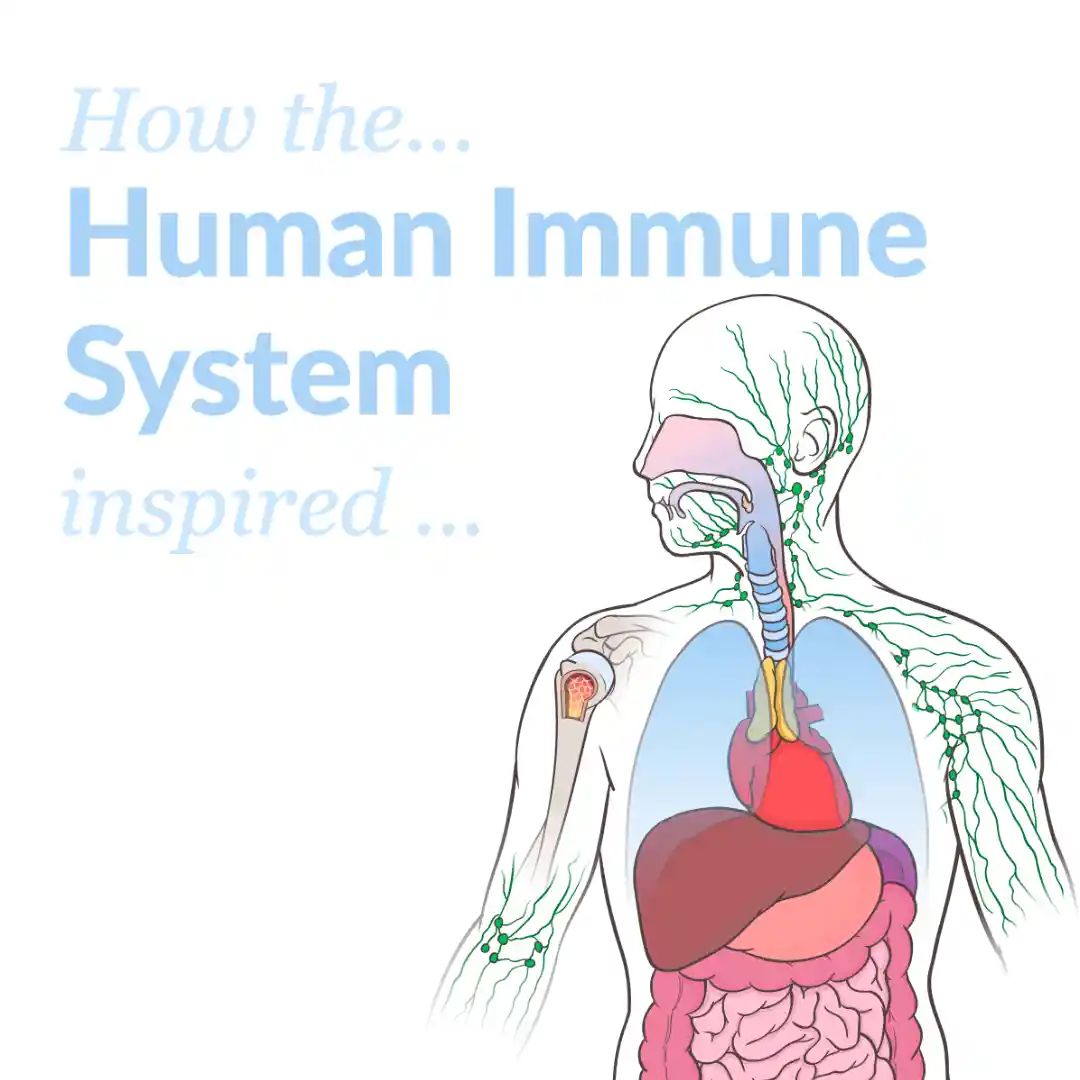

Our body's immune system is a remarkable system helping the body fight various infections, inflammations, viral or bacterial intruders and even cancer. A white blood cell type called the T cells take the job of defending our body by detecting and killing harmful invaders and cells. The body trains the t cells by exposing them to genetic markers of unwanted bodies like viruses and attaching the test marker on the T cells. This is done in a decentralized manner and forms an integral part of our immune system to identify any irregularities in the fastest possible way and eliminate them. Scientists from Sandia National Laboratories and University of New Mexico have developed a biosurveillance algorithm that works like our T cells. They are using statistical analyses to determine anomalies like sudden or large ER visits to identify and curb an outbreak. On top of that, their algorithm contains synthetic T cells which use a negative selection criteria along with various parameters such as the time of the year, type of illness and other factors to make the system as robust as our highly evolved immune system.
🪲 Inspired by: The human immune system
📍 Where: New Mexico, USA
🎯 Innovation / Function: decentralized disease outbreak monitoring
✏️ Who: Sandia National Laboratories and University of New Mexico
How Bacillus Bacteria Inspired A Self-Healing Bio-Concrete


Concrete makes the world go round but, as with anything else in this world, it degrades over time. And with the amount of the stuff that we use, it costs tens of billions of dollars the world over to repair damaged concrete. And that’s every year! But what if we had concrete that heals itself as our own body does? That’s exactly the solution Hendrik Marius Jonkers came up with when he found rock-dwelling, limestone-producing bacillus bacteria. These bacteria lie dormant inside the concrete. Anytime a crack occurs in the material and the bacteria is exposed to moisture and air, it springs back into action and produces limestone! The bacteria has a lifespan of 200 years and can save the world billions of dollars and a lot of time.
🦠 Inspired by: Bacillus Bacterium
📍 Where: Netherlands
🎯 Innovation / Function: Self-repairing concrete
✏️ Who: Hendrik Marius Jonkers
How Mussels Inspired A Non-Toxic Underwater Adhesive


On a scuba diving excursion, the lead scientist of Mussel Polymers Inc. discovered the remarkable ability of mussels to adhere to surfaces even in strong currents. He then found out about the adhesive used by them and along with other researchers and universities, came up with a solution which mimics this extraordinary compound. This adhesive works 3 times stronger than other underwater solutions (About Us - Mussel Polymers) and is also non-toxic to the environment. A major problem faced by coral conservationists is that they are not able to replace the coral at the rate that they are getting bleached out. This solution can expedite the process and help save one of the most important biomes on our fragile little planet.
🦪 Inspired by: mussels adhesive
📍 Where: Pennsylvania, USA
🎯 Innovation / Function: Non-toxic, strong underwater adhesive
✏️ Who: Mussel Polymers
How Animal Limbs Inspired Earthquake Resistant Bridges


Conventional bridges, particularly those in high-seismic regions, are vulnerable to damage and sometimes, total collapse! These monoliths are also prone to bending and cracking and hence require exorbitantly pricey repairs and extensive closures. Now imagine human and animal limbs. They perform similar functions of holding the weight of the animal but are also designed to handle unexpected loads and to disperse these unexpected forces by allowing for slight movements using flexible joints. The researchers at Texas A&M have designed new bridges mimicking the shock absorption capabilities of limbs by introducing a sliding motion and a capacity to withstand slight movements to mitigate sudden impacts to the structure. Fixing bridges is a slow process and costs a significant amount of money, which then indirectly affects the community. The money saved can then be used for helping the community rather than repairing infrastructure.
🪲 Inspired by: Limbs
📍 Where: Texas, USA
🎯 Innovation / Function: earthquake resistant bridges
✏️ Who: Texas A&M university
How Snake Skin Inspired Shoe Grips with Better Friction


There is a major public health scare among our senior citizens that is going unnoticed! Falls are the leading cause of death for older adults and the second leading cause of occupational-related deaths. So it infers that if we could increase the friction between the feet and the floor, we could save lives and billions in medical bills[Wyss Harvard]. The researchers at SEAS and MIT in response have developed an adaptive shoe grip which is achieved by cutting the material as per the Japanese technique of Kirigami. The cuts mimic the scales on the skin of a snake and it is designed such that when the material stretches, the spikes pop out, sticking into the ground and when it flattens, spikes fold back, flattening the surface. This allows the shoes to be more grippy and also very light, allowing the wearer to traverse the surface with the dexterity of a snake.
🪲 Inspired by: Snake skin
📍 Where: Cambridge, MA, USA
🎯 Innovation / Function: Organic, chemical-free pest control
✏️ Who: Harvard John A. Paulson School Of Engineering And Applied Sciences
How a Kingfisher, an Owl and a Penguin Inspired a Japanese Bullet Train


In 1989, the Shinkansen bullet train was fast. Really fast! It boasted speeds up to 270 kph but had one major problem, it made a loud boom in residential areas as it exited tunnels due to the pressure buildup as it passed through them. Luckily, the lead designer was an avid bird watcher and he came up with an ingenious solution using nature. He noticed that the kingfisher also similarly had to travel from one dimension(air) to another(water) silently and fast to catch its underwater prey and modelled the train’s front as per the beak of the kingfisher. Similarly, connectors were designed as per the silent wings of the owl and the slippery bellies of the Adélie penguin. This made the train 10% faster, use 15% less power while being quiet as a kingfisher.
🐧 Inspired by: Kingfisher beak, Owl wing, Adélie penguin
📍 Where: Japan
🎯 Innovation/function: Shinkansen bullet train
✏️ Who: Eiji Nakatsu
How Termite Mounds Inspired Building Design for Efficient Cooling and Ventilation


If you have ever noticed them in a thick jungle or just your backyard, termites can create the most elaborate homes to put even some of the silicon valley CEOs to shame. Additionally, these homes are extremely well ventilated and remain effectively cool in some very hot areas in the tropic and subtropic climates. As the planet heats up, humanity's answer to just put more ACs is proving to be a disastrous solution which is just adding more to the problem and this efficient method of cooling using convection might just be the answer. Engineers in Zimbabwe have built a shopping mall which uses 10% less energy for cooling the building mimicking the termite mounds.
🐜 Inspired by: Termite Mounds
📍 Where: Zimbabwe
🎯 Innovation/function: Ventilation, cooling and heating using convection flow
✏️ Who: Mick Pearce, Eastgate Centre
Side note: This is perhaps the most famous example of biomimicry in the built environment. Click here for more biomimicry architecture examples or here for other biomimicry examples in urban design
How the Gecko’s Feet Inspired Non-toxic Glue-less Adhesives


Aaah! How did it get there? Humanity has long pondered the geckos' unique ability to scale basically any surface and even hang up quite comfortably on the ceiling. Scientists at GeckSkin studying the gecko’s feet have identified that they are covered with microscopic hair called Setae which cover its entire feet. These hairs allow the gecko to cling on to surfaces using something called the Van der Waals force. Usually, these forces are not strong enough to hold things together but the gecko’s hair works in congruence to enable this sticky ability so that they can take the next step without leaving any residue behind. The engineers at UoM designed a synthetic version of the same which can hold up to 700 pounds of weight on an index-card-sized strip.
🦎 Inspired by: Gecko’s feet
📍 Where: USA
🐣 Innovation/function: Glue-less adhesive that is non-toxic and very strong
✏️ Who: Geckskin
How Coral Organisms Inspired Innovative Carbon Sequestering


The cement industry is responsible for 8% of global CO2 emissions. 60% of these emissions are formed during the process of calcination when mostly limestone is mined from queries and treated. Corals in the sea however have been forming very strong and stable materials by actually using CO2 present in water and forming metal carbonates. Scientists at Blue planet have figured out a way to make carbonate aggregates mimicking the corals without having to purify the CO2 from the air. This eliminates the high energy consumed to separate the CO2 from the air and gives a carbon negative byproduct which can be used by the cement industry.
🐠 Inspired by: Coral Organisms
📍 Where: California, USA
🎯 Innovation / Function: Energy-efficient carbon sequestering and useful byproduct
✏️ Who: Blue Planet Systems
How the Xylem Tissue in Plants Inspired a Cost Effective Filtration System


Water is necessary for all life on our planet. It is the catalyst and solvent for most of life’s chemistry. Since water goes so well with everything, it is also common for many microbes, dirt and other particles to dissolve in it and contaminate it for human consumption. Plants use the xylem transportation system for cycling water from the ground through its body for use in hydration and photosynthesis. This tissue has an inbuilt filtration system which filters impurities and small to moderate sized particles from the water. MIT is currently developing a low cost modular filtration system that can be used as an end point filtration system for resource poor and developing countries. Small pieces of sapwood from trees can be used for the same which can help in wide scale adoption of the technology.
🪲 Inspired by: Xylem tissue in plants
📍 Where: Massachusetts, USA
🎯 Innovation / Function: Cost effective filtration system
✏️ Who: MIT
How Underwater Plants Inspired a Renewable Energy Solution


Renewable sources of producing energy are the need of the hour but as we have discovered recently, our current implementations of solar and wind energy have been caught lacking in providing continuous, waste-free, non-toxic and scalable forms of energy. We need functioning alternatives and wave energy is just that. Researchers at BioPower Systems Pty Ltd(BPS) have studied the resiliency of underwater plants to withstand strong currents and have attributed its success to its flexible base and stretchy structure. They have developed power conversion modules which are mounted on the seafloor and use movement similar to underwater plants to spin turbines and generate electricity.
🪲 Inspired by: Underwater plants
📍 Where: New South Wales, Australia
🎯 Innovation / Function: Wave energy generation
✏️ Who: BioPower Systems Pty Ltd(BPS)
How School of Fish Inspired More Efficient & Space-Saving Wind Farms


Traditionally, wind turbines have to be placed far apart as they can disrupt each other’s wind flow and reduce the overall efficiency of the farm. Scientists, while examining schools of fish, observed that they swim very close to each other without disturbing the water around them. Hence, vertical axis wind turbines were born which when placed tightly and at particular angles with each other actually help in increasing the other’s efficiency. This uses the same principles that the fish use to propel themselves forward using the water vortices created by the fish around them. This will help us in deriving more power from a small area.
🪲 Inspired by: School of fish
📍 Where: USA
🎯 Innovation/function: More efficient and space-saving wind farms
✏️ Who: John Dabiri, CalTech
How the Sycamore Seed Pod Inspired an Elegant and Efficient Ceiling Fan


The beauty of nature, they say, lies in its simplicity and the muted elegance in its form and function. Some designs such as the sycamore seed pods allow it to auto-rotate in the air. This allows it to float in the atmosphere and in turn travel longer distances. The ceiling fans designed by Sycamore Technologies based on these seed pods look aesthetically pleasing, having won many design awards and also provide excellent airflow at low rpm, run quieter and are highly energy efficient due to their aerodynamic designs. A quiet introspective look at nature can teach us a lot about nature's simple solutions to complex human problems.
🪲 Inspired by: Sycamore seed pod
📍 Where: NSW, Australia
🎯 Innovation / Function: Beautiful and efficient ceiling fan
✏️ Who: Sycamore Technologies
How Slug Slime Inspired Sticky Surgical Glue


The common garden slug has a minor super power. It can glue itself to wet surfaces and also be flexible enough to maneuver itself as we have all seen it do. As it turns out, the slime generated by these innocuous slugs is not only super sticky but also very strong. Meanwhile in the medical world, doctors and scientists were also in search of a surgical adhesive that could repair a critical and delicate organ such as our heart better than stitches and staples, when they came across this ingenious solution that already existed in nature. When the slug is scared, it secretes a mucus in its defense which is so strong that birds and other predators can’t pull this slug off of leaves, even wet leaves. This inspired the scientists at Harvard’s Wyss Institute to create a similar double-layered hydrogel surgical adhesive that has been successfully tested on bloody pig hearts and other animal parts. So next time we see these trailblazers, we should thank them for their medical service.
🪲 Inspired by: Slug slime
📍 Where: Boston, MA, USA
🎯 Innovation / Function: sticky and strong surgical adhesive
✏️ Who: Hansjörg Wyss Institute for Biologically Inspired Engineering at Harvard University
How The Octopus-Inspired Soft Robots

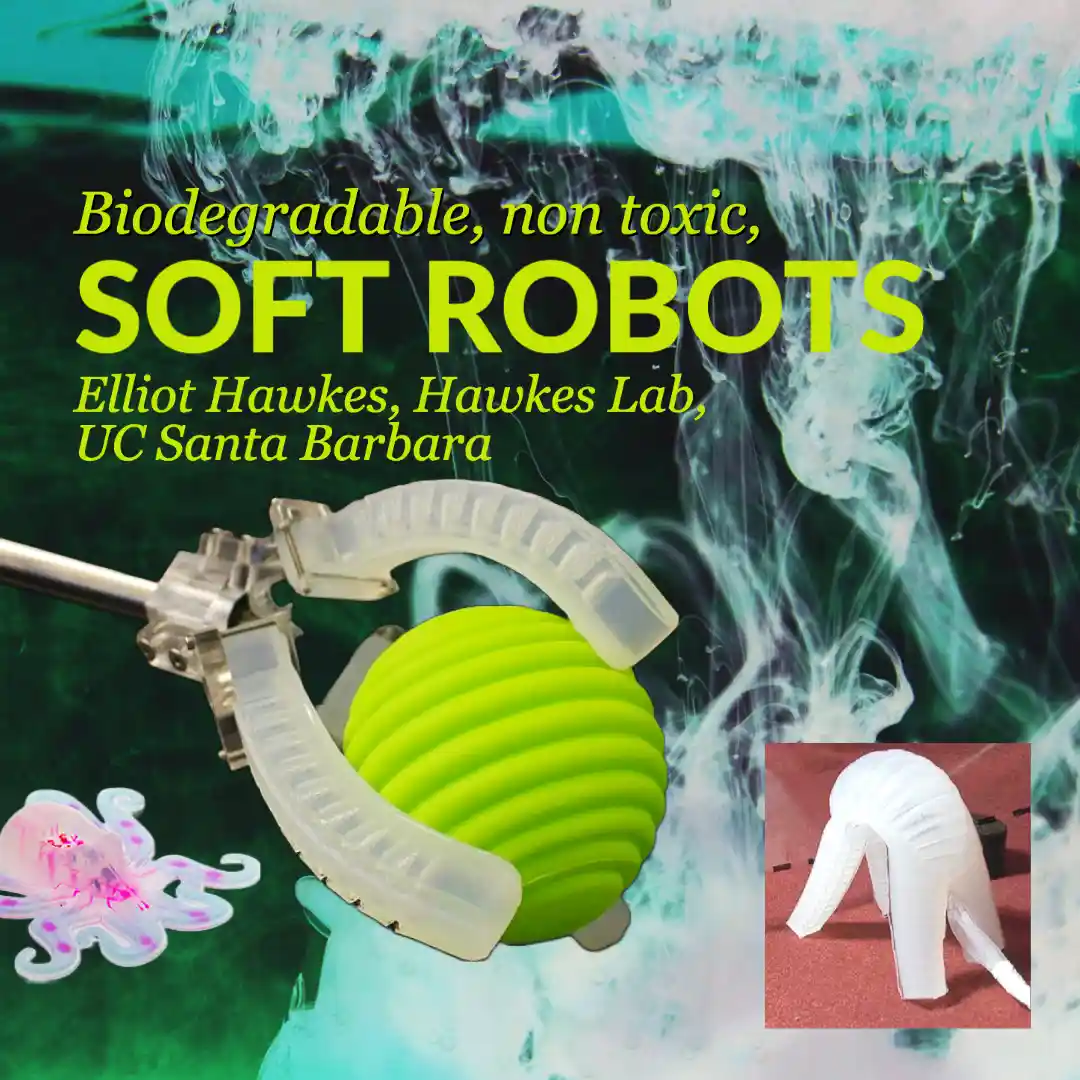
The traditional robots with rigid joints and actuators are very good at performing very specific tasks but mostly fail to adapt to changing or opposing environments. This led scientists to the cunning octopus. This creature is incredibly intelligent no doubt but most of its skills comes from its body and its maneuverability so much so that it can perform very distinct and unrelated tasks. This is aided by its tentacles that can form hands, legs, shields and harpoons. It can even unscrew a jar with its tentacles. Mimicking this nonrigid versatile shape and using compliant mechanisms, controlling pressure and adding sensors, the researchers at Hawkes Lab at UC Santa Barbara have created soft robots which might even save your life one day.
🐙 Inspired by: Octopus tentacles
📍 Where: USA
🎯 Innovation/function: Biodegradable, non-toxic, better-performing material made from industrial waste
✏️ Who: Elliot Hawkes, Hawkes Lab, UC Santa Barbara
How the Human Retina Inspired Event-Based Vision
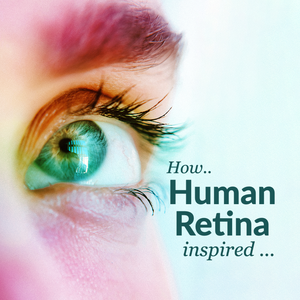
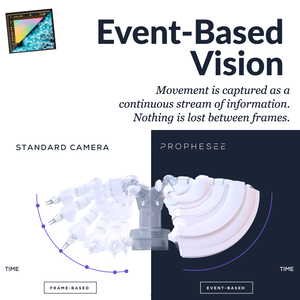
Eyes have evolved independently countless times in nature and the human eye is one of our most developed organs. It is used to understand, to react and make decisions based on any changes observed in the environment. Conventional video technology used by us generates video by sequencing image after image at fixed points. This leads to data storage and redundancy problems for applications which only require trigger data. Metavision by Prophesee mimics the retina of the eye and has developed pixels which are asynchronous and independent and only react if there are changes in the scene. This technology has a lot of applications in food processing industries and also to capture any unusual motion in machines which can help in early fault detection as these cameras are more sensitive to motion than our own eyes.
🪲 Inspired by: Human eye retina
📍 Where: Paris, France
🎯 Innovation / Function: Event-based vision
✏️ Who: Prophesee
How Forests Inspired a Chemical-Free Water Filtration System


Forest ecosystems are a well oiled machine. Resources here are so abundant that various organisms have carved out a niche for themselves like some biodegradation specialists. Such organisms are in demand because, of all things, there is one thing we humans are really good at: producing waste. The people at Biolytix are taking naturally adaptive organisms that are good at waste biodegradation in forests and importing them into our sewage and wastewater networks to clean them. On top of that, they are also providing ways to use the cleaned water to irrigate plants alongside finding other secondary uses for the same.
🪲 Inspired by: Forest decomposer organisms
📍 Where: Auckland, New Zealand
🎯 Innovation / Function: Energy efficient wastewater management
✏️ Who: Biolytix
How Spider Webs Inspired a Bird Protection Glass


Humans invented glass at least 5000 years ago. It is durable, luxurious and some argue is one of our most important innovations. We also like that it is transparent as it allows complete transparency while still providing a strong barrier against the environment. The transparency part though is proving to be deadly for the hundreds of millions of birds that end up crashing into our buildings and skyscrapers. They just can’t detect them! People at Arnold Glas wanted a solution for this and it turns out nature has solved this problem over 50 million years ago. Spiders also don’t want birds to collide with their webs as they are too large to be caught in them and hence have incorporated UV-reflective silk strands in their webs. ORNILUX Bird Protection Glass is a glass with a UV-reflective coating which is detected by birds and they neatly fly around it.
🪲 Inspired by: Spider web
📍 Where: Remshalden
🎯 Innovation / Function: Bird protection glass
✏️ Who: Arnold Glas
How Photosynthesis Inspired Chemical Reactions Using Light


The global chemical industry consumes 25% of the energy used across all manufacturing industries. This is driven by the high temperature and pressure required by mostly used rare earth catalysts like Iridium. Plants and other special organisms also produce energy using sunlight without the need for harmful chemicals and high heat, with a catalyst called chlorophyll. Mimicking this ability, the team at New Iridium has developed patented light-absorbing chemical compounds which kick start reactions when they are introduced to light. This low-cost, greener process has the ability to significantly reduce the damage of the current chemical industry.
🌈 Inspired by: Photosynthesis
📍 Where: Colorado, USA
🎯 Innovation / Function: chemical catalysts sensitive to light
✏️ Who: New Iridium
How The Chameleon Inspired Colour Changing 3D Prints


Are you tired of having to change your printer cartridge every time you need to change the color? Is your printer slowing you down? Well then look outside because nature has been doing multicolor additive manufacturing for only the last billion years. Chameleons use a mix of structural and pigment-based methods to dramatically and accurately change colors. The University of Illinois Urbana-Champaign has designed a printing process which produces crystal structures that reflect different visible lights based on the size and shape of the crystals. They control the size by regulating the temperature and speed at the printing nozzle. This might be the future of 3D printing with printers ready to print various colors from the same filament or input material.
🪲 Inspired by: Chameleon
📍 Where: Illinois, USA
🎯 Innovation / Function: 3D printer that prints different colors in the same cycle
✏️ Who: University of Illinois Urbana-Champaign
How Dolphins Inspired Accurate Underwater Communication

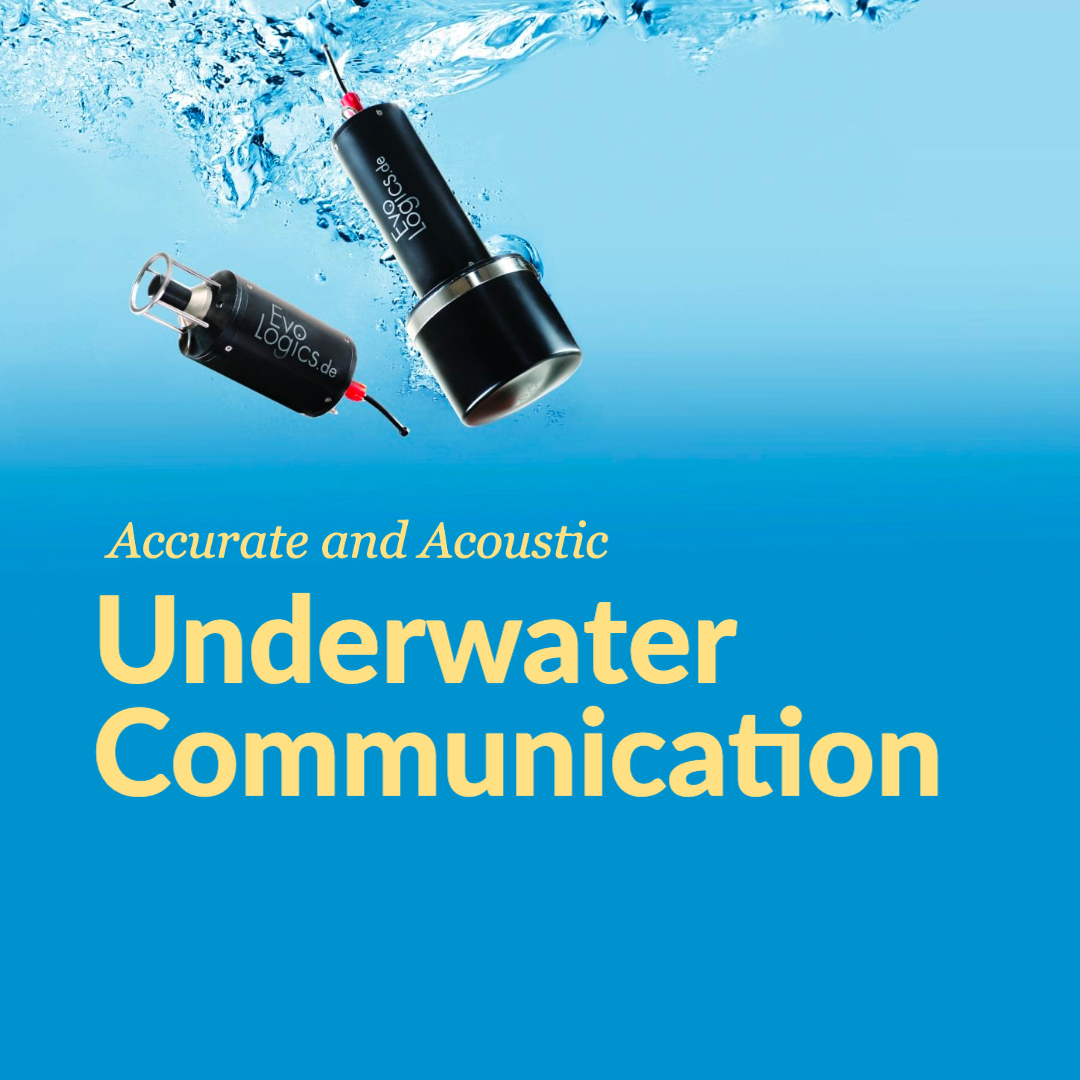
Much of our earth's oceans continue to be unexplored and unmapped. Certain Tsunamis, earthquakes and other catastrophic events are undetected due to the motion, noise, limited bandwidth, and variable delays that severely impact data transmission underwater. Dolphins on the other hand seem to communicate complex information just fine! The way they achieve that is by distributing their chirps and songs over a wide frequency band. This greatly negates specific disturbances and provides clarity even through echos. As such, dolphins and other marine life forms provide the key to unlocking our oceans.
🪲 Inspired by: Dolphins
📍 Where: Berlin, Germany
🎯 Innovation / Function: Precision underwater communication
✏️ Who: EvoLogics GmbH
How The Cyphochilus Beetle Inspired A Non-Toxic Natural White Pigment
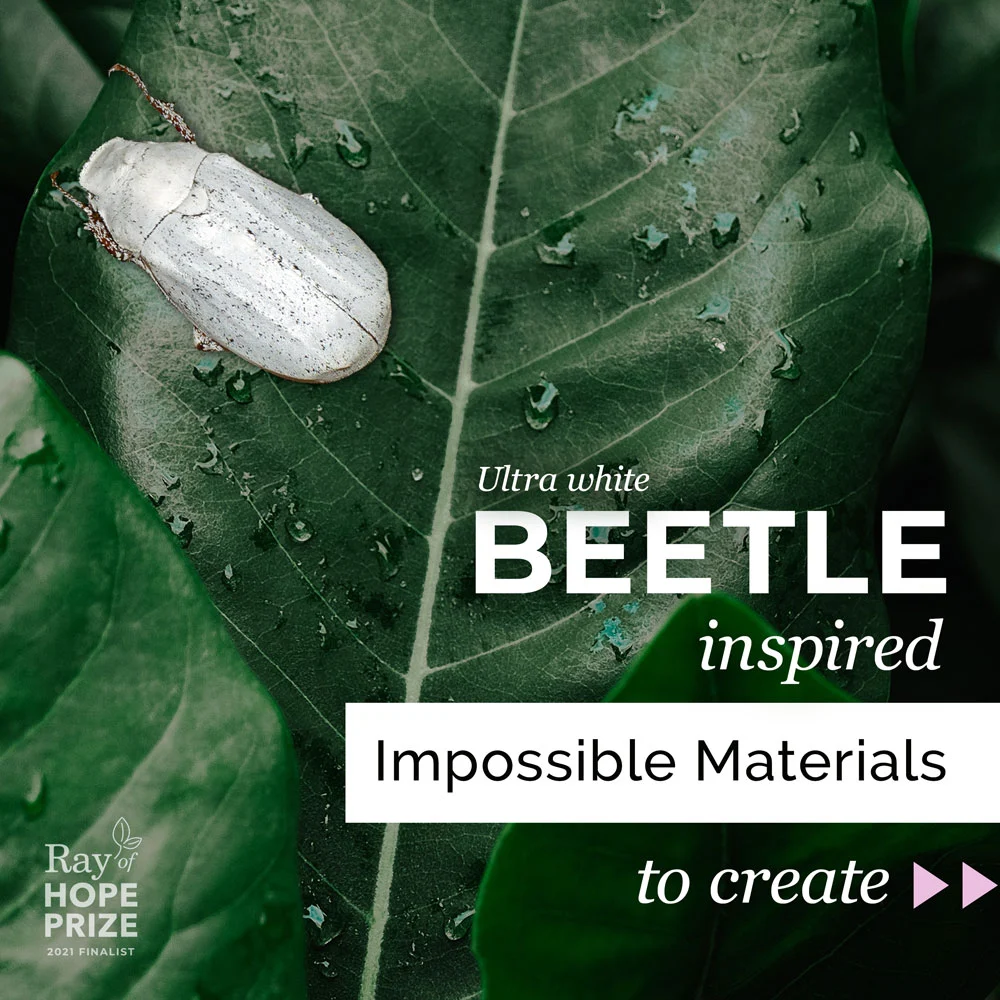
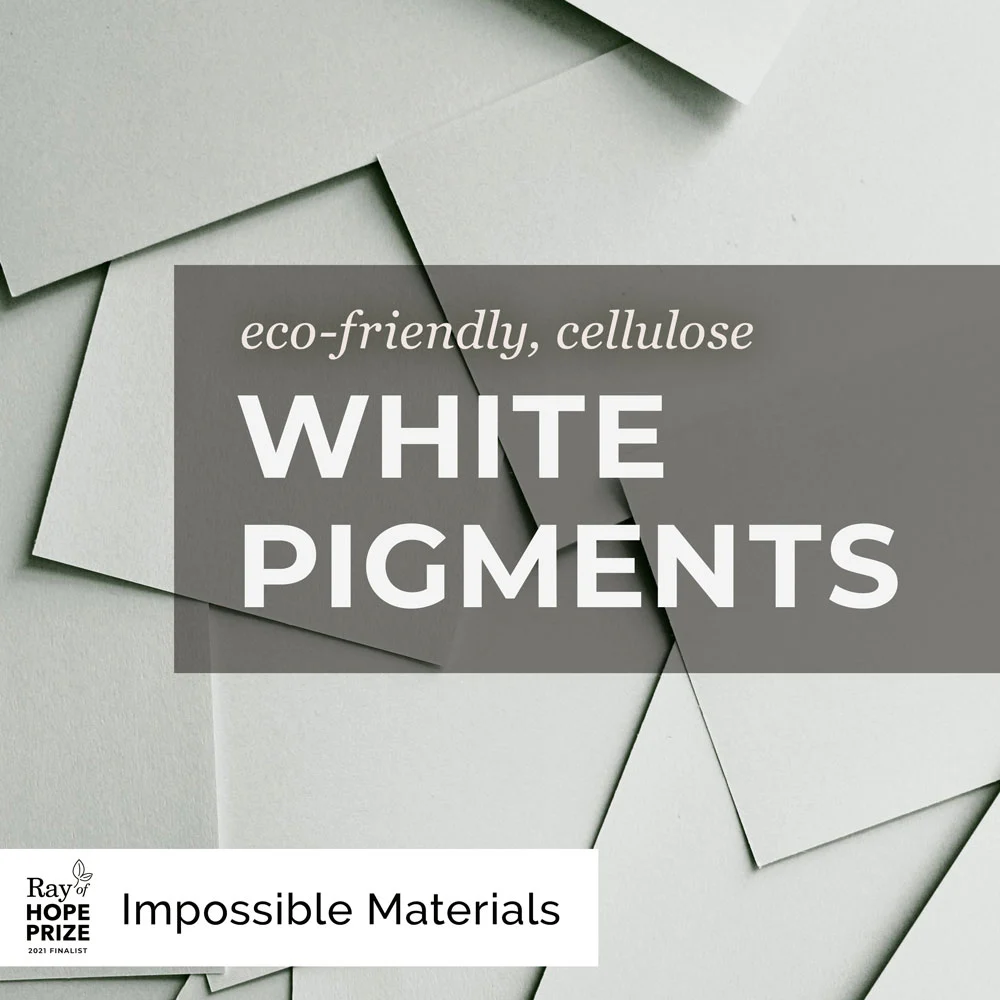
Our industries, it seems, can’t get enough of toxic chemicals and continue to use them even though most can be very fatal to our health. So is the case with paint dyes. Titanium Dioxide (TiO2) is commonly used to produce everyone’s favourite; white colour. We need to stop this deadly trend and just our luck, researchers at Impossible Materials studying the Super-white Cyphochilus beetle have mimicked the nano-structure inside the beetle’s skin which reflects white light and replicated it inside a cellulose molecule chain. Thus creating a better and safer white pigment.
🪲 Inspired by: Cyphochilus beetle
📍 Where: Cambridge, UK
🎯 Innovation / Function: non-toxic natural white pigment
✏️ Who: Impossible Materials
How the Mangroves Inspired the Living Seawall
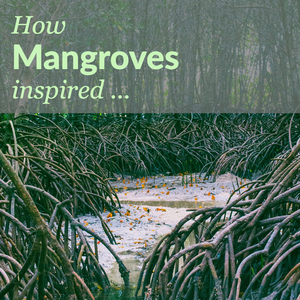

Mangroves are extremely important to the local environment as they create and sustain their own biome supporting innumerable species, helping fight climate change, prevent coral bleaching and they are the only type of tree that can grow in saline water. Unfortunately, over the last 200 years, we have lost 20% of our total mangrove cover [medium]. To counter this problem, Sydney Institute of Marine Science and Reef Design Lab along with Volvo Cars have engineered an ingenious solution by planting over 1000 panels on the seawalls along the Sydney coastline. The panels are made in such a way that they mimic the roots of the mangroves, which is allowing a lot of important local coral species and crustaceans to find new homes and additionally also reducing the harm caused by seawalls by reducing the speed of the water hitting the walls which in turn decrease the sand erosion along the shores which have shown to be the major cause of coastal natural disasters.
🪲 Inspired by: Mangroves
📍 Where: Sydney, Australia
🎯 Innovation / Function: Artificial structures for coral restoration
✏️ Who: Sydney Institute of Marine Science and Reef Design Lab and Volvo cars
How Adaptive Organisms, Slime Mold Inspired Innovative Industrial CAD Design Tool
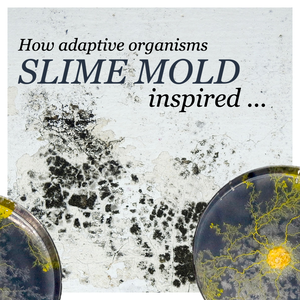

Where nature excels the most is local sourcing and efficient use of materials. From human skeletons to bird skulls to the slime mold growth. Efficiency is the name of the game. With its R&D and expert additive manufacturing skills, natural designs seemed too intricate, complex and impossible to replicate, until now. Recent developments in 3D printing allows us to primitively mimic nature’s craftsmanship and now Autodesk has developed Project Dreamcatcher, which looks to take advantage of nature’s R&D and allows users to generate thousands of generative design solutions that meet a variety of constraints as in the real world. This can lead to less wasteful designs which might turn out as beautiful as nature itself.
🪲 Inspired by: adaptive organisms, slime mold
📍 Where: California, USA
🎯 Innovation / Function: Real-time resource and time-efficient CAD design tool
✏️ Who: Autodesk
How Nematode Pheromones Inspired Organic Chemical-Free Pest Control


Our current agricultural practices are the perfect example of the law of diminishing returns. Industry goliaths are encouraging ever more use of fertilizers and pesticides which is degrading the natural quality of the soil and tonnes of it is getting washed out into our water streams. These practices are also facing consumer backlash who are growing ever more weary of the overused chemicals ending up on their dinner plates. To combat the crop pest problem in an organic way, Pheronym Inc has turned to the abundant nematodes and tapped into their communication systems. It has been well established that nematodes are the most natural remedy to maintain soil health. Researchers have worked out the pheromone signals of the nematodes which promote the activeness and functioning of the beneficial nematodes and also inhibit the harmful parasitic nematodes. The chemicals have proven to be good for bee health as well and all without using any toxic chemicals.
🪲 Inspired by: Nematode pheromones
📍 Where: California, USA
🎯 Innovation / Function: Organic, chemical-free pest control
✏️ Who: Pheronym, Inc
How The Spiders Silk Inspires High-Performance Silk Fiber


At the holy grail of chemical science, probably right below graphene, lies the ability to mass produce spider silk. A material lighter than hair and stronger than steel! Although we might not be there yet, we definitely have an understanding of how spiders produce the said silk. And as with humans, we have come very close to replicating it. Spintex Engineering can spin fibres at room temperature, just by pulling from a liquid protein gel and without using harsh chemicals. The fibres are high-performance and also completely biodegradable. This has the ability to completely revolutionise the fashion and clothing industry.
🕷 Inspired by: Spider silk spinning
📍 Where: United Kingdom
🎯 Innovation / Function: High performance, biodegradable fibre
✏️ Who: Spintex Engineering (a leader in biomimicry engineering)
How the Manta Ray Inspired the Underwater Surveillance Robot


Our knowledge about the ocean might be less even than that of space. 95% of the ocean mass remains largely unexplored[source: NOAA]. Yet, some animals make it their home and thrive under such conditions. Scientists at EvoLogics have developed an autonomous underwater vehicle by mimicking the manta ray. The large fins of the ray allow it manuver underwater with extreme precision. It can dive and climb, hold depths and travel at very fast speeds making it ideal for exploring and understanding our mysterious oceans.
🪲 Inspired by: Manta ray
📍 Where: Berlin, Germany
🎯 Innovation / Function: Autonomous underwater surveillance vehicle
✏️ Who: EvoLogics GmbH
How Algae Inspired Multi-Functional Biodegradable Shoes


I think we are all in agreement. Fast fashion is bad for the environment and is a leading contributor of non biodegradable and non recyclable plastic waste in our landfills and even worse; our oceans! The team at Munjoi is changing that by using algae instead of petroleum-based plastic. They have tied up with companies capturing invasive algal blooms and others who are growing carbon negative algae. They have also made the shoes multi-functional as, with their innovative designs, the same shoes can be used as sandals, shoes and everything in between. Fungi are little carbon sequestering machines and biodegrade within 4-6 months if leached into the ocean. The shoes can also be recycled into new material. Similar companies like bloom and C Combinator are also taking this approach and changing the fashion industry.
🪲 Inspired by: Algal oil, ecosystem
📍 Where: Massachusetts, USA
🎯 Innovation / Function: Multi-functional, biodegradable fashion products
✏️ Who: Munjoi, C Combinator, Bloom
How Ocean Microorganisms Inspired Biodegradable Plastic Alternative


One of our planet's most incredible abilities is to absorb carbon. Carbon capture as it is called. From large forest ecosystems to massive oceans to the dazzling variety of organisms which use carbon to make various components. In the oceans, organisms form carbonates. In other areas, certain bacteria convert them into a bioplastic called PHB. PHB is a biodegradable (compostable) compound which gives out CO2 and Water as the byproduct when degraded. It can also be used to make new plastic alternative materials after finishing its current product lifecycle. In the ocean, such materials take 1-3 years to biodegrade. Newlight Technologies has already implemented this idea with their product - AirCarbon!
🌊 Inspired by: Various ocean and other microorganisms
📍 Where: California, USA
🎯 Innovation / Function: Compostable bioplastic made from CO2 and other carbon alternatives
✏️ Who: Newlight Technologies
How The Mantis Shrimp Club Inspired Lightweight, Impact-Resistant Composites
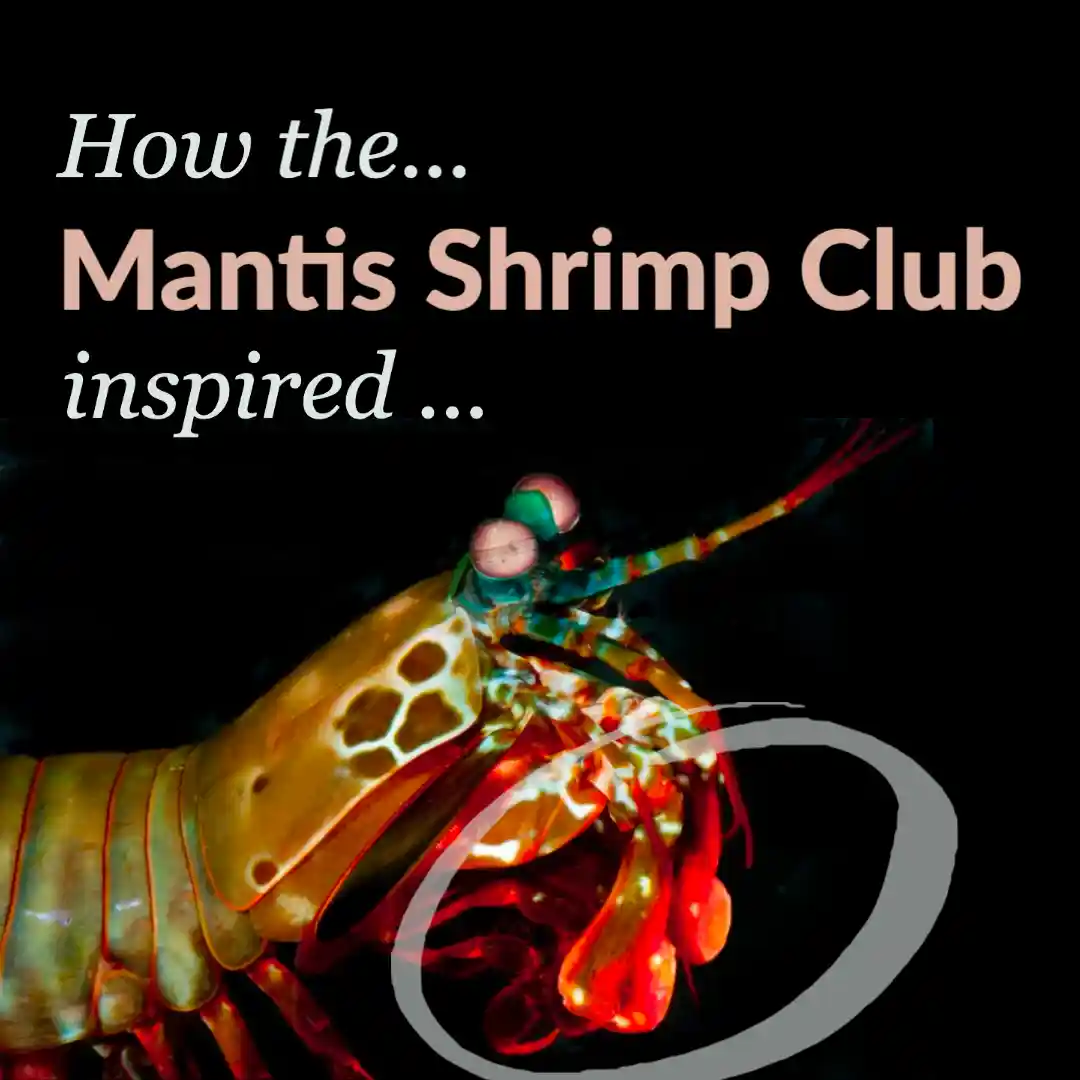

The mantis shrimp might just be the best boxer in the world. They can smash hard crab shells like an egg; as the clubs, they use accelerate faster than a .22 calibre bullet when released. But the question remains, how is the shrimp able to handle the impact of such an explosive impact? The secret lies in the shock absorption capabilities of the club. Although It’s made up of chitin, a very common building material in nature, the helicoid structure in which the natural polymer is arranged makes it excellent at shock absorption. Helicoid Technology is a company that has developed a polymer mimicking the mantis shrimp so that stronger polymers can now be made using fewer materials.
🦐 Inspired by: Mantis Shrimp
📍 Where: California, USA
🎯 Innovation / Function: Impact-resistant, strong, lightweight material
✏️ Who: Helicoid Technology
How Moths Eyes Inspired a Polarized Light-Capturing Satellite


The universe hides some grand and beautiful secrets. Most of which are visible only under the infrared light as it allows us to see through the clouds and gases scattered throughout the universe. Scientists at NASA working on the HAWC+ far-infrared camera and imaging polarimeter, needed ways to capture the maximum amount of the infrared rays incident on the telescope. In nature, at night, the moth has similar visibility problems and it solves them by having its eyes covered with a regular pattern of conical protuberances. These nano sized rough spikes help guide the light down to the eye instead of being reflected back. These modifications are helping HAWC+ get much more light from the same source and get a clearer image of the object in space.
🪲 Inspired by: Moth eyes
📍 Where: California, USA
🎯 Innovation / Function: Polarized light-capturing satellite
✏️ Who: Stratospheric Observatory for Infrared Astronomy (SOFIA), NASA
How the Pangolin Inspired Flexible, Tough Backpacks


Curling up into a ball against an enemy might not work for you but it's the pangolin’s best defense. Its whole body is covered with hard scales up to 1000 in number and they overlap in a roofing tile like pattern. This allows it the flexibility to curl up if it senses any threat and completely cover its underbelly. Pangolin backpacks have designed backpacks that mimic the structure so that your laptop and other vitals can be protected under the casing and the scale like patterns allow for a complete opening as well.
🪲 Inspired by: Pangolin
📍 Where: USA
🎯 Innovation / Function: Flexible and durable backpacks
✏️ Who: Pangolin backpacks
How the Venus Flower Basket Inspired Modern Architecture


Over the last 2000 years, we humans have pretty much mastered the art of building and infrastructure, or so we think! If you take a stroll across London, you see what looks like an abandoned alien spaceship in a sea of uninspiring buildings called “The Gherkin”. Inspired by the venus flower basket, a sea bottom-dwelling filter feeder, this biomimicry building uses a spatial arrangement of delicate materials such as glass to form a strong but flexible structure. The round shape of the building also helps it deflect wind currents around it. The building uses another filter-feeding chimney-like ability of the sponge which creates shafts between various floors to allow for airflow and ventilation. The building structure also allows for less beams and columns to be used and leads to a reduction in material use.
🪲 Inspired by: Venus Flower Basket
📍 Where: London, UK
🎯 Innovation / Function: Beautiful and a better-ventilated building
✏️ Who: 30 St Mary Axe AKA The Gherkin
PS - Interested to read more about bio-inspired design? Find out: What is biophilic design?
How The Chameleon's Tongue Inspired A Bionic Versatile Gripper


The chameleon is a superhero you didn't even know you wanted. It's got speed, traversing ability, invisibility and a tongue 2 times faster than the fastest car. Another feature of the tongue is its ability to grab onto prey that are very different in shape and size. The biomimics at Festo have developed an adaptive material gripping tool that has a soft and flexible silicon cone at its end. The tool first positions itself over the object. It then wraps around the object just like a chameleon would do to a fly. Once gripped, it varies the pressure applied to tightly fasten the object in its grip and then deliver it to its destination. This tool has a huge amount of military and relief applications when the size and shape of items to be retrieved are unknown.
🪲 Inspired by: The chameleon’s tongue
📍 Where: New York, USA
🎯 Innovation / Function: soft adaptive material gripping tool
✏️ Who: Nova Laboratories
Closing Notes
Are you interested to learn biomimicry? Download our FREE eBook below
Wild regards
The Learn Biomimicry Team
Resources and References
- Define Biomimicry / What is Biomimicry / biomimicry definition
- Biomimicry in architecture / biomimetic architecture
- Top 10 Biomimicry Examples of 2021
- Top 10 Biomimicry Examples of 2022


